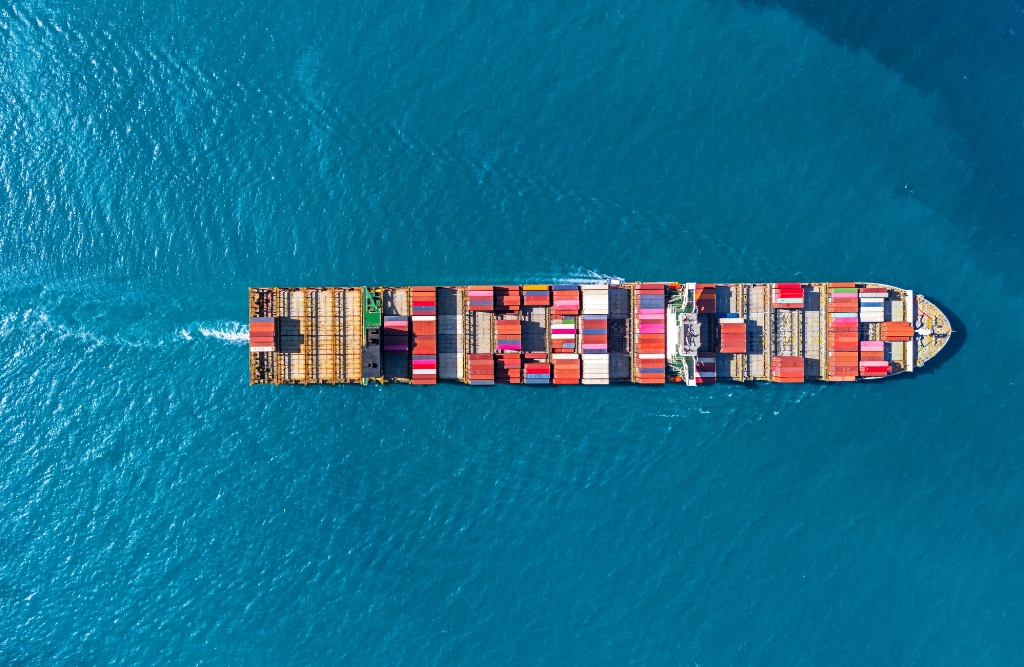The Long War on Global Supply Chains: An Urgent Call for Predictive Defense

For nearly three decades, a quiet but persistent war has been waged against the arteries of global commerce. China, Russia, and other state and non-state actors have methodically targeted the world’s supply chains— not through missiles or armies— through manipulation, control, and disruption of the commercial networks that underpin modern life.
This “long war” has accelerated in the past decade with a singular goal: erode the complex global supply chain systems supporting the United States and its allies, ultimately destabilizing populations, economies, and governments without firing a shot.
Today, two new realities define the battlefield.
First, as the relative predictability of the Cold War’s bipolar system has shifted to today’s chaotic and multipolar “pick-up game” of shifting alliances, nations form and abandon partnerships as interests change. Even traditional allies increasingly act transactionally, creating instability in partnerships and increased uncertainty.
Second, the post-World War II rules-based global trading system was designed on an assumption that economic interdependence would deter armed conflict. That playbook no longer applies. The rules are being rewritten daily by actors who do not feel bound by them, scrapping what we thought we knew about the divide between peace and war.
The new reality created by these factors demands a mindset shift for national security and business leaders alike. They must now play offense and defense simultaneously— often several times a week— against opponents who change players, coaches, and playbooks with every encounter. There is no advance scouting, no game film, and no neutral referee.
So, who are we playing against?
China, The Patient First Mover
China has been the long war’s most disciplined and patient player. Its control of critical resources allows for extraordinary leverage:
- Over 80% of the world’s active pharmaceutical ingredients (APIs) originate in China
- More than 60% of global rare earth refining occurs there
- 98% of U.S. gallium imports— vital for semiconductors and defense technologies— come from China
- 60% of the world’s graphite supply, essential for advanced batteries, is produced in China
These are not trade statistics, but pressure points in the global system.
In 2024, Beijing tightened export controls on gallium and germanium, choking semiconductor and defense supply chains. This prompted sharp warnings from the U.S. Trade Representative, whose agency’s Special 301 Report highlighted China’s growing use of licensing discrimination and opaque enforcement to distort markets and expand its industrial dominance.
Meanwhile, China’s Belt and Road Initiative (BRI)— a $1 trillion global infrastructure campaign— has given it influence over more than 100 ports across 60 countries. Among them is the Freeport Container Port in the Bahamas, a critical trans-shipment hub just 55 miles from the U.S. coast, owned and operated by a Hong Kong-based conglomerate.
China and its allies understand a simple truth: commercial disruption can be more corrosive to an adversary’s stability than kinetic warfare. When an adversary is patient and politically stable, the long war offers the best return on investment.
The Line Between Commerce and Defense
The United States draws a definitive line between government and enterprise. Our adversaries do not.
The Chinese government can— and does— direct state-linked enterprises to act in ways serving national strategy, even when doing so will distort markets or undermine competitors. For example, the U.S. would never ask General Electric to disable a power grid abroad or Ports America to degrade throughput or completely bottleneck a key trade hub or route.
China has no such constraints.
This asymmetry extends deep into America’s defense ecosystem. Nearly 90% of U.S. military logistics for overseas operations rely on commercial carriers, yet the Military Sealift Command operates only about 60 vessels. This figure is a terribly small fraction of the tonnage required for sustained conflict scenarios.
Private Sector Awakening— But Not Fast Enough
The private sector is beginning to recognize the magnitude of the threat. According to a 2024 National Association of Manufacturers survey, 72% of supply chain leaders now cite geopolitical instability as their top operational risk, which is an astronomical rise from just 28% in 2019.
Simultaneously, fewer than 30% have integrated real-time and context aware threat monitoring into daily operations, and less than 2% have deployed artificial intelligence to detect or anticipate manipulation. The gap between awareness and action remains dangerously wide.
The CSCR³ and Building Predictive Resilience
To close this gap, the United States needs more than awareness and an integrated capability to see, simulate, and act on global supply chain threats before they strike.
A Critical Supply Chain Risk & Resilience Range (CSCR³) represents that vision.
This public–private–academic partnership must bring together the best of government, industry, and research to create a continuously automated platform for analyzing physical, digital, and financial networks. CSCR³ will integrate real-time and predictive intelligence across both national security and commercial domains, identifying not only what is happening in global supply chains, but what will happen next.
And yes, before anyone starts forming the acronym committee, CSCR³ is just a name I made up. Whatever the U.S. and its Allies want to call it, the name doesn’t matter; the mission does.
Through advanced AI and live global data streams, CSCR³ will:
- Fuse public and private data to detect covert and overt manipulation.
- Simulate offensive and defensive countermeasures across industries.
- Deliver predictive global supply chain modeling to inform mitigation, response, and proactive operations.
In short, CSCR³ will be the nation’s first predictive “practice field” for predictive supply chain security: a dynamic environment to understand, test, and prepare for future disruptions before they unfold.
No Longer Theory: The Long War is Here
The long war on commerce is no longer theoretical. It is active, adaptive, and accelerating.
If the United States fails to act with urgency and unity across public, private, and academic sectors, we risk losing without ever even realizing we were under attack.
The time for static defenses has passed. The future of resilience lies in prediction, simulation, collaboration, and proactive interdiction. CSCR³ offers the blueprint to jump forward and win the long war through the same channels in which it began.
By Dennis Groseclose
Founder and CEO, TransVoyant
Dennis is the Founder and CEO of TransVoyant, a company that’s redefining how we think about global logistics and national resilience — delivering autonomic, self-aware supply chains capable of sensing disruptions, anticipating outcomes, and acting in real time to protect and optimize the flow of commerce around the world.
His career spans a unique intersection of national security, advanced technology, and commercial innovation. As a senior leader at Lockheed Martin, Dennis built and directed the line of business that delivered the post-9/11, real-time intelligence and risk-based security programs still used today by the United States and our Five Eye (FVEY) partners to secure global transportation, logistics, and critical infrastructure — while ensuring the free movement of goods and people.
Earlier, as an officer in the U.S. Air Force and member of the Senior Executive Service, he led programs at the nexus of space, intelligence, and defense technology. Later, as an entrepreneur, he’s guided organizations from startup to IPO — always focused on operational decision advantage and mission assurance.
Dennis is a graduate of the U.S. Air Force Academy, holds an MBA from Louisiana State University, and an MS from the Air Force Institute of Technology. He’s also the author of nine U.S. and international patents and has served on multiple boards advancing national security and global commerce.



